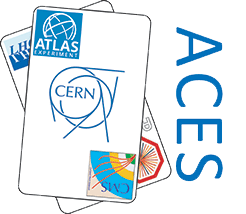Speaker
Description
Summary
A methodology and concept of the work have arisen from an operational experience of the network of Medipix detectors providing real-time information about the pixel hit rate. These detectors were successfully operated within the ATLAS experiment to measure the ATLAS machine’s luminosity, the activation of surrounding material during and after collision and the radiation field at various positions in the experiment.
During the recent shut-down, this network was upgraded to the newer Timepix detector technology and a two sensor setup to improve the discrimination of charged particles and gammas against neutrons.
Four different converter layers, i.e. (${}^{6}$Li, CH${}_{2}$ (PE) and PE+Al), were inserted between the silicon sensors. Each layer is sensitive to different neutron energies. Thermal and epithermal neutrons are seen with an efficiency of ~1-3% after conversion to $\alpha$ particles and tritons in the ${}^{6}$Li-region. Fast neutrons are detected by recoil protons below PE.
Due to the two-sensor design, directional information can be obtained. Inserting a layer of aluminum below PE gives information about the hardness of the fast neutron spectrum. Using the spectroscopic mode of the detectors together with a track pattern recognition procedure permits the discrimination of the gammas and electrons from highly ionizing charged particles in mixed fields of radiation. Detector responses were calibrated with standard gamma and neutron reference sources at the Czech Metrological Institute (${}^{241}$Am, ${}^{137}$Cs, ${}^{60}$Co, thermal, ${}^{241}$AmBe, ${}^{252}$Cf), on neutron spallation source at LANSCE, at the Heidelberger Ion Therapy Center and on CERN SPS beams. This way, we have obtained detection efficiencies for charged particles in energy range from 10 keV to GeV energies, for photons from 5 keV to 1.4 MeV, and for neutrons up to 800 MeV including their angular dependencies.
By the long life-time of the previous detector system, it had been demonstrated, that the devices are sufficiently radiation hard for the increased luminosity of future LHC runs.
The data acquisition is controlled remotely, with a RASPBERRY-PI interfacing the communication with each device and transferring the data to a storage server. From there the data is available for visualization and off-line evaluation.
